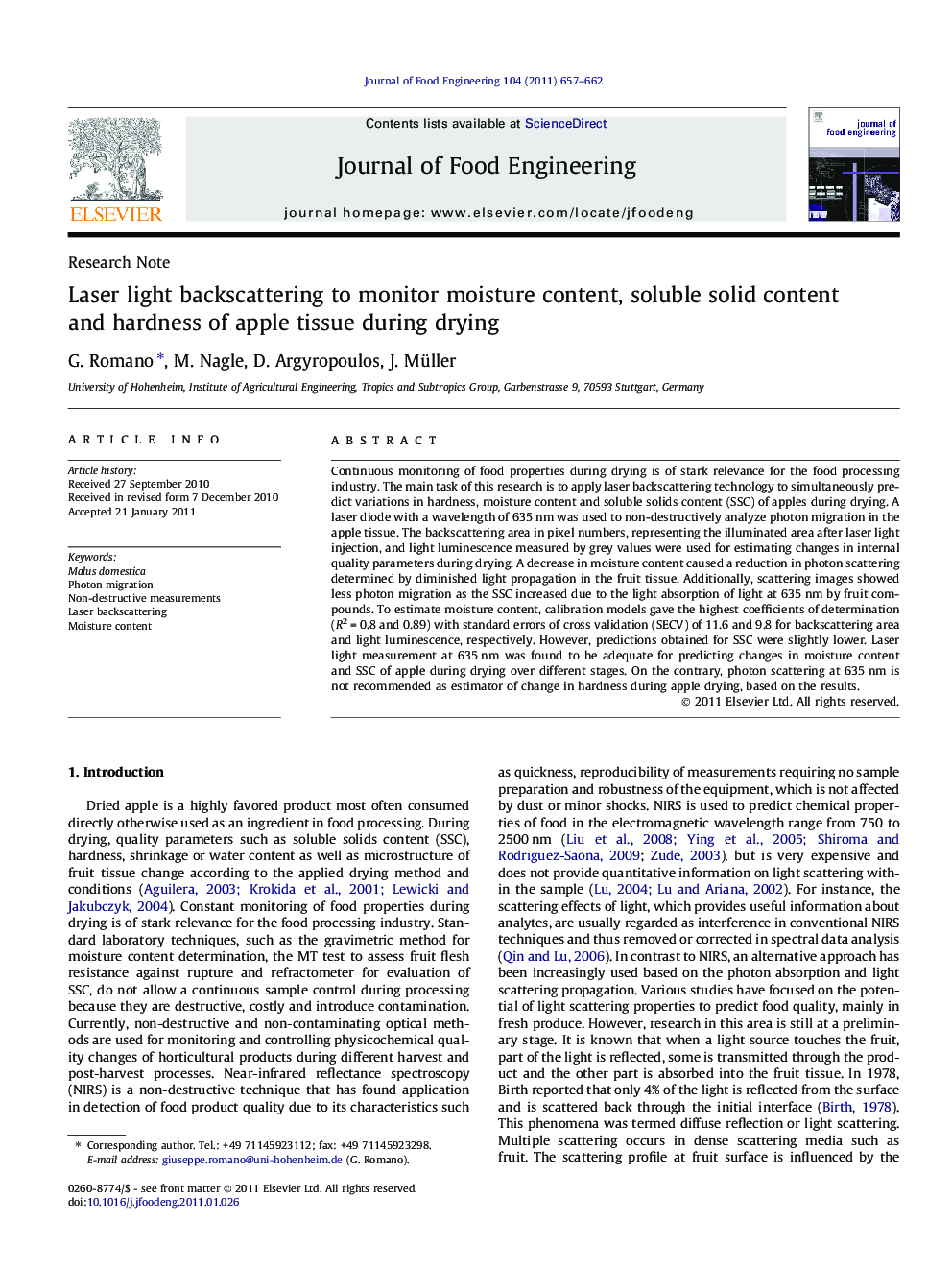| Article ID | Journal | Published Year | Pages | File Type |
|---|---|---|---|---|
| 224126 | Journal of Food Engineering | 2011 | 6 Pages |
Continuous monitoring of food properties during drying is of stark relevance for the food processing industry. The main task of this research is to apply laser backscattering technology to simultaneously predict variations in hardness, moisture content and soluble solids content (SSC) of apples during drying. A laser diode with a wavelength of 635 nm was used to non-destructively analyze photon migration in the apple tissue. The backscattering area in pixel numbers, representing the illuminated area after laser light injection, and light luminescence measured by grey values were used for estimating changes in internal quality parameters during drying. A decrease in moisture content caused a reduction in photon scattering determined by diminished light propagation in the fruit tissue. Additionally, scattering images showed less photon migration as the SSC increased due to the light absorption of light at 635 nm by fruit compounds. To estimate moisture content, calibration models gave the highest coefficients of determination (R2 = 0.8 and 0.89) with standard errors of cross validation (SECV) of 11.6 and 9.8 for backscattering area and light luminescence, respectively. However, predictions obtained for SSC were slightly lower. Laser light measurement at 635 nm was found to be adequate for predicting changes in moisture content and SSC of apple during drying over different stages. On the contrary, photon scattering at 635 nm is not recommended as estimator of change in hardness during apple drying, based on the results.
